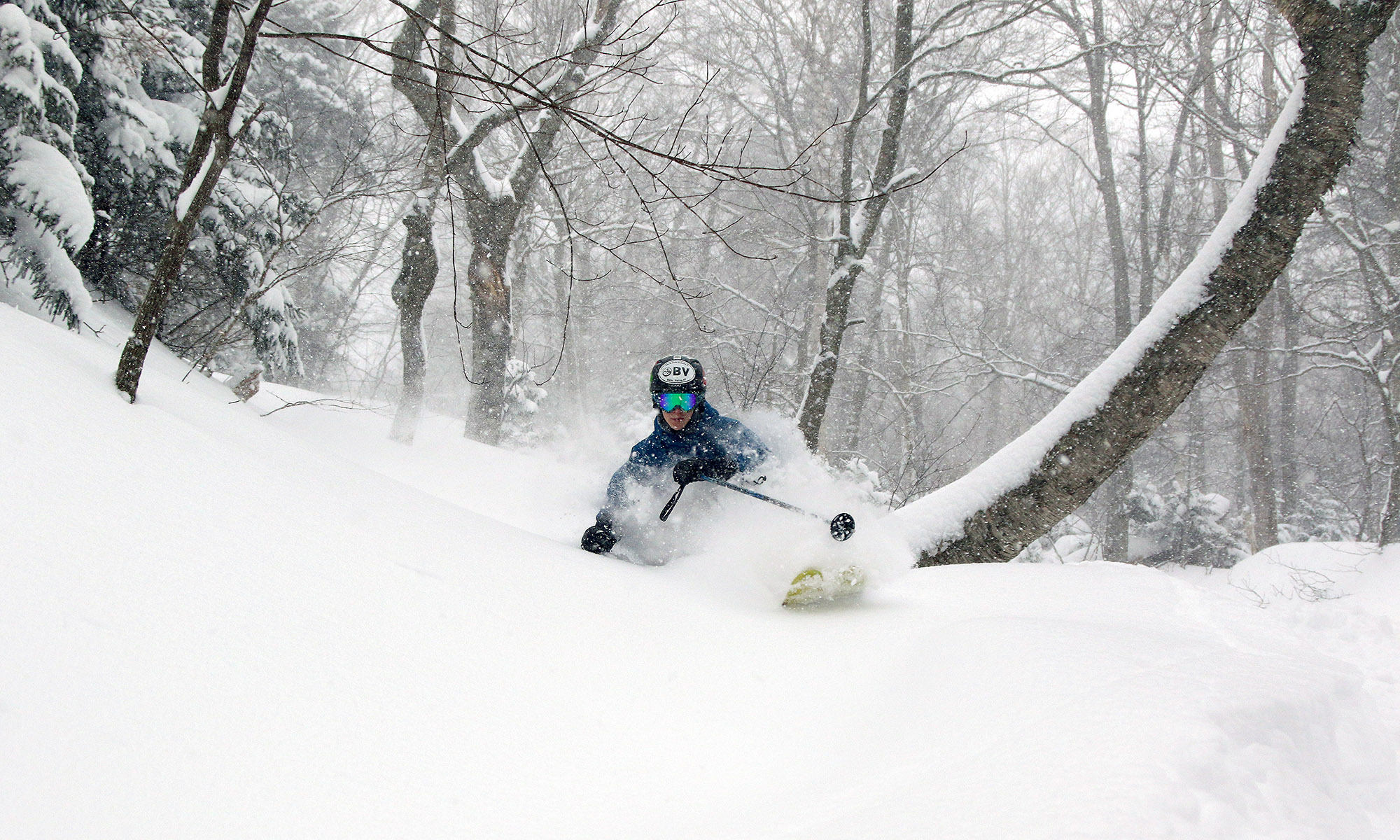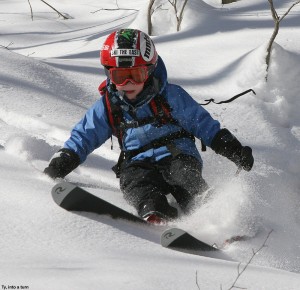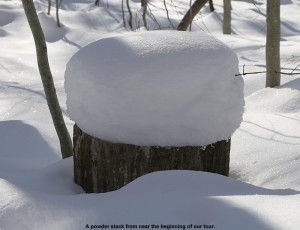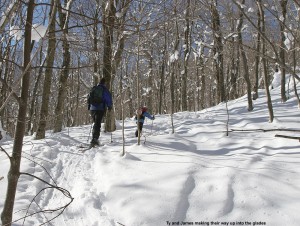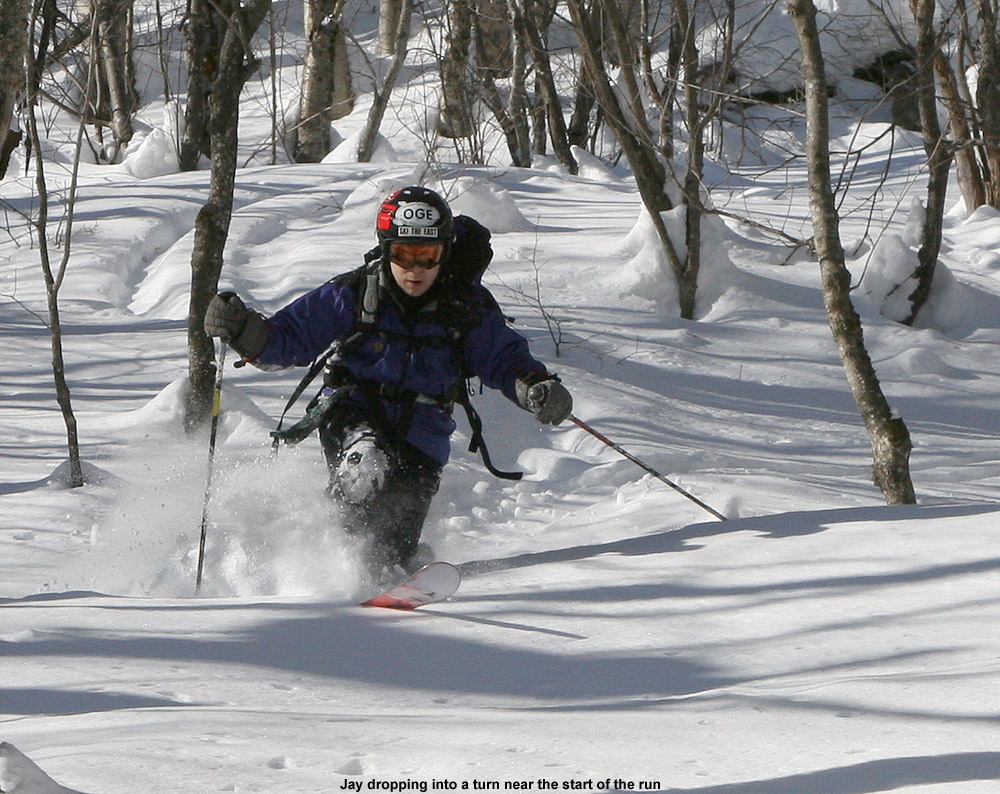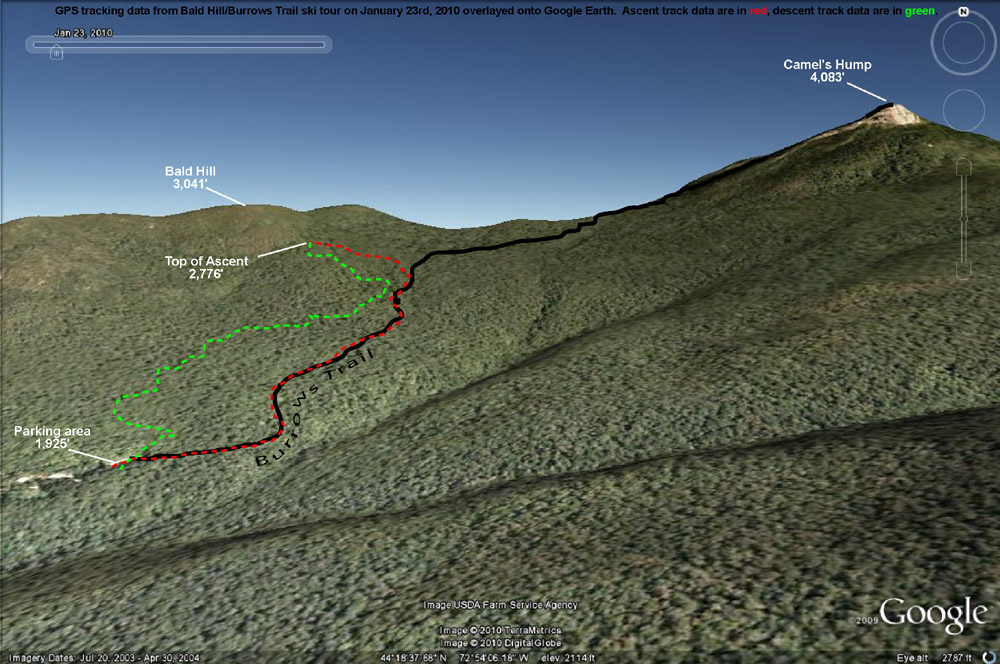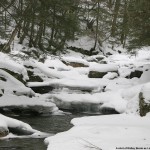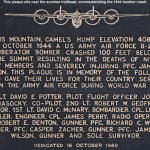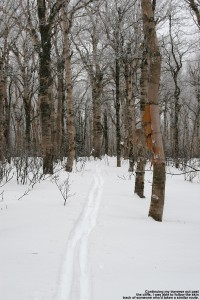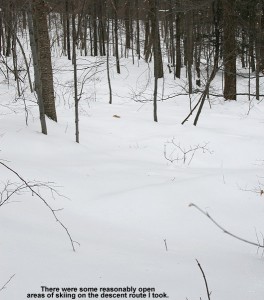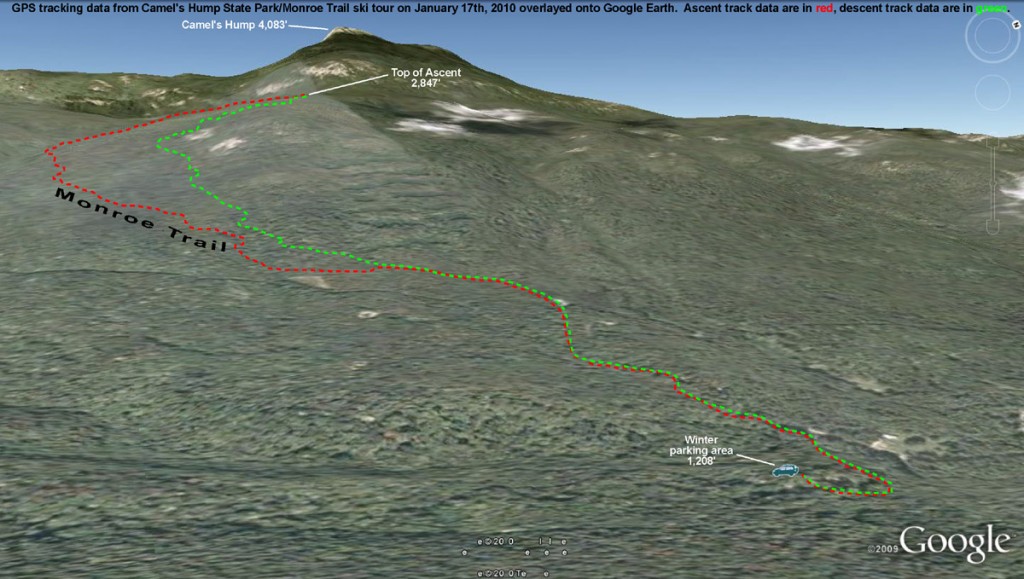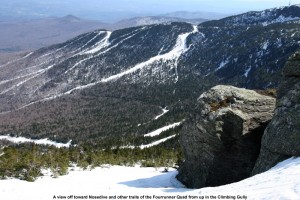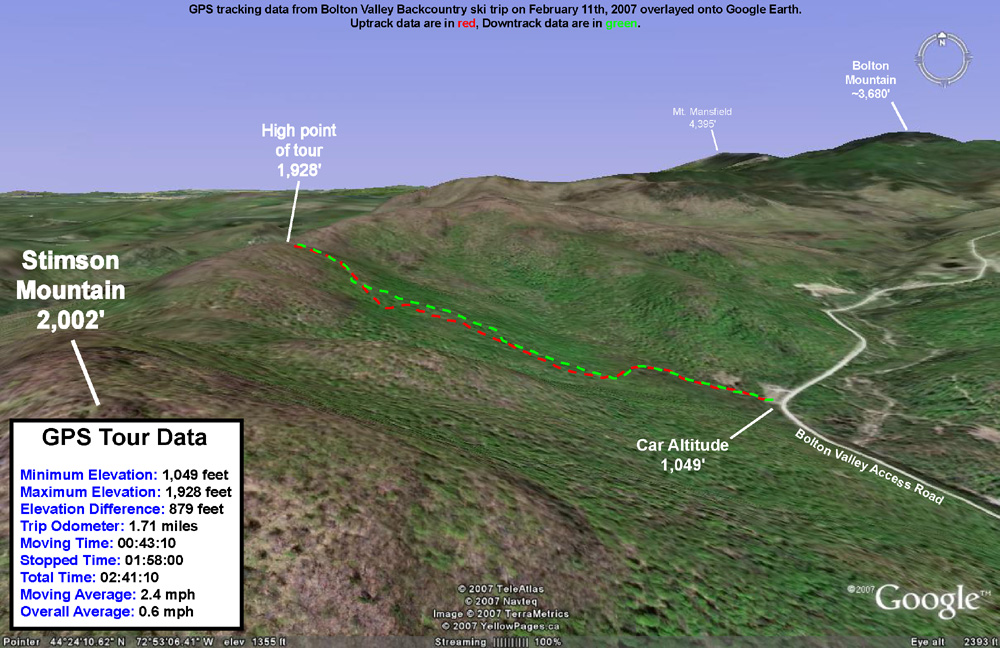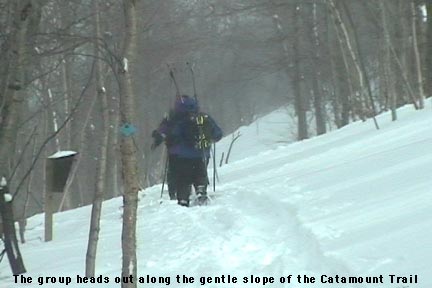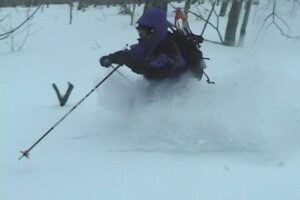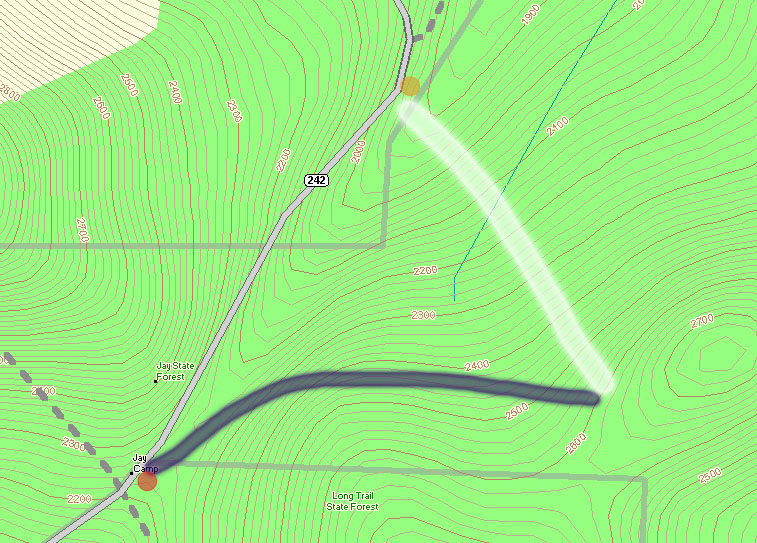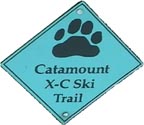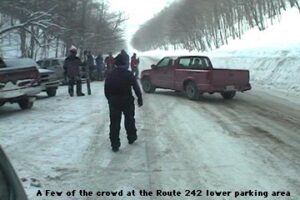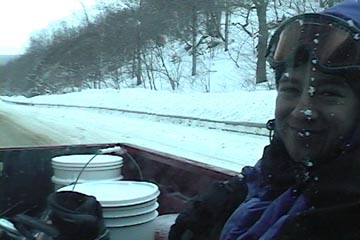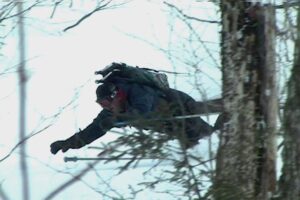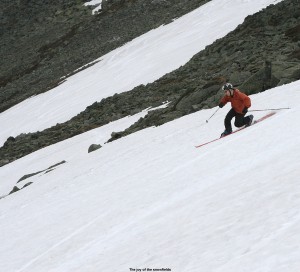
The Mount Washington Auto Road was finally open for business by the weekend of May 22nd – 23rd, but since E was out of town, Memorial Day weekend was our first opportunity for a ski trip. As always, weather was an important determinant in whether or not we would try to take the boys up the mountain, but as the weekend grew closer, the good forecasts continued to hold. None of the days looked like a total washout, but Saturday looked like the best bet since the NWS point forecast indicated the chance for gusts as high as 100 MPH in the higher elevations of the Presidential Range on Sunday, and Monday had higher potential for precipitation. On Friday evening we put ice packs in the freezer, charged batteries, and planned to make a final check on the forecast in the morning.
Saturday morning’s forecast still looked decent; there was a chance of precipitation in the afternoon, but winds were expected to be low with comfortable temperatures. I reserved a campsite for Saturday night, and we spent most of the morning getting things together for the trip and taking care of other stuff around the house. We finally headed out in the late morning under mostly cloudy skies, but no signs of precipitation.
Once we’d reached the base of the Mount Washington Auto Road, we stopped in at the Great Glen Lodge to hit the restrooms and check on the summit weather. We were excited to see that the summit weather board indicated winds of just 4 to 12 MPH and a temperature of 50 F. Even better though, was being able to look up toward the higher elevations to the west to see blue skies. Last year’s trip featured 50 MPH winds and fog, conditions that were more amenable to playing in the strong gusts on the deck of the observatory than skiing with the boys. From our views along Routes 2 and 16, the snow up high looked less plentiful than we’ve often seen at this time of year. The level of the snowpack was potentially due to at least a couple of factors. Although there were some nice snowy storms in April and May, too many of the midwinter storms skirted off to the south of Northern New England this season, and more recently we’d seen warm, or even hot, dry weather with lots of sun. One never really knows quite what the snow situation is going to be until they get up on the mountain though, and based on the Mt. Washington web cam images, we knew there was going to be plenty of terrain to ski.
http://www.JandEproductions.com/2010/29MAY10A.jpg
The fair weather made for an enjoyable drive up the Auto Road, and the views were stupendous as usual. We stopped in just briefly at the summit, and got an overview of the various eastern snowfields on the drive back down the road. We could see that there were plenty of options, and continued our drive down to the parking area below Ball Crag where we’d based ourselves before.
http://www.JandEproductions.com/2010/29MAY10B.jpg
http://www.JandEproductions.com/2010/29MAY10C.jpg
Consistent with the faster depletion of the snow this season, although potentially due to seasonal variability as well, the snowfield that we’d skied with the boys in May of 2008 was absent. But, based on the boy’s enthusiasm, along with their improved endurance and ski abilities, we were looking to hit some different snowfields this season anyway. The plan was to head up the Nelson Crag Trail for a bit as we’d done on our last ski trip to the area, and then traverse generally southward below Ball Crag to search out some snowfields that would work well for everyone.
Our equipment setup from our last Mount Washington ski trip had worked well, so we used a similar configuration with just a couple of changes. I carried the big SLR in my photo/ski pack, which is also set up well to carry multiple pairs of skis, so I carried mine as well as the boy’s. E and I simply hiked in our Telemark boots, but since the boys would be skiing in alpine ski boots, they wore their hiking boots to make their traveling much easier, and along with her skis, E carried their ski boots in her pack. The boys had their poles for hiking, and a new addition this time was that they carried their water, food, clothing, and helmets in/on their packs.
http://www.JandEproductions.com/2010/29MAY10D.jpg
http://www.JandEproductions.com/2010/29MAY10E.jpg
http://www.JandEproductions.com/2010/29MAY10F.jpg
http://www.JandEproductions.com/2010/29MAY10G.jpg
We hiked roughly two tenths of a mile up the Nelson Crag trail before breaking off and contouring southward. The boys were very mobile in their hiking boots and light packs, and they moved along at a great pace. Compared to our last ski outing on Mount Washington, Ty was much more comfortable traveling through the alpine setting; he was well ahead of the rest of the group and opted for a much higher traverse. I knew that we would eventually run into the main portion of the east snowfield if we didn’t run into any other snowfields first, but there turned out to be earlier options. Ty was the first to spot some of the bigger snowfields below us along the Upper portion of the Huntington Ravine Trail, and we planned to work our way toward those after seeing what we found ahead of us. After only about a tenth of a mile of traversing, we hit a small snowfield, and the group, which had become a bit scattered during the traverse, got back together to start the descent.
http://www.JandEproductions.com/2010/29MAY10H.jpg
http://www.JandEproductions.com/2010/29MAY10I.jpg
http://www.JandEproductions.com/2010/29MAY10J.jpg
http://www.JandEproductions.com/2010/29MAY10K.jpg
That first snowfield was moderately steep, perhaps in the 30 degree range or so. Since it was steep and rather short, the boys decided to wait until one of the bigger snowfields to start skiing. They opted to simply do some sliding on the snow. E and I mentioned that it was likely to be easier to ski than slide since they would have edges to control their descent, but they were having fun. E and I skied the snowfield, and then we all traversed over to a much larger snowfield off to the north. When we’d arrived at the initial snowfield, there had been a couple of people skiing laps on the edge of the larger snowfield below, but by the time we got there they were gone, and we had the whole thing to ourselves. In fact, they were the only people we’d seen on any of the snowfields in that area. We were surprised by the lack of people since it was Memorial Day weekend, but perhaps everyone had already done their skiing the previous weekend. The weather continued to feature interludes of sunny and cloudy periods, and although we’d seen what looked like thicker clouds and showers off to the Green Mountains in the west, no precipitation materialized in our area.
http://www.JandEproductions.com/2010/29MAY10L.jpg
http://www.JandEproductions.com/2010/29MAY10M.jpg
http://www.JandEproductions.com/2010/29MAY10N.jpg
http://www.JandEproductions.com/2010/29MAY10O.jpg
Ty and Dylan were the first to ski the larger snowfield, and it was fun to watch Dylan follow Ty through the terrain. The snowfield wasn’t quite as steep as the first one, and it was a fun experience for the boys to have the whole face to themselves with the ability to decide what route they wanted to take. The boys stopped about 2/3 of the way through the descent to wait for us, then E joined them, and I skied all the way to the bottom to get some pictures from below.
http://www.JandEproductions.com/2010/29MAY10P.jpg
http://www.JandEproductions.com/2010/29MAY10Q.jpg
http://www.JandEproductions.com/2010/29MAY10R.jpg
http://www.JandEproductions.com/2010/29MAY10S.jpg
http://www.JandEproductions.com/2010/29MAY10T.jpg
http://www.JandEproductions.com/2010/29MAY10U.jpg
http://www.JandEproductions.com/2010/29MAY10V.jpg
http://www.JandEproductions.com/2010/29MAY10W.jpg
http://www.JandEproductions.com/2010/29MAY10X.jpg
http://www.JandEproductions.com/2010/29MAY10Y.jpg
From the bottom of that snowfield we traversed north and slightly upward to another snowfield section that was connected to the first. At that point we were on the long collection of snowfields that sits above Huntington Ravine. The next section of snow didn’t provide quite as much vertical drop, but it didn’t seem like it had seen any skier traffic in quite a while, so it was extremely smooth. I made a boot ladder that was spaced well for the boys, and we hiked up to the top of that section. The boys had been happy with their earlier turns, and were most excited to play on the rocks and stairs of the Huntington Ravine Trail, so they switched back to their hiking boots and played around while E and I did a bit more skiing. Those turns were a lot of fun, and E got the time she’d been looking for that let her practice and dial in some smoother Telemark turns.
http://www.JandEproductions.com/2010/29MAY10Z.jpg
http://www.JandEproductions.com/2010/29MAY10AA.jpg
http://www.JandEproductions.com/2010/29MAY10AB.jpg
http://www.JandEproductions.com/2010/29MAY10AC.jpg
http://www.JandEproductions.com/2010/29MAY10AD.jpg
http://www.JandEproductions.com/2010/29MAY10AE.jpg
http://www.JandEproductions.com/2010/29MAY10AF.jpg
http://www.JandEproductions.com/2010/29MAY10AG.jpg
http://www.JandEproductions.com/2010/29MAY10AH.jpg
http://www.JandEproductions.com/2010/29MAY10AI.jpg
http://www.JandEproductions.com/2010/29MAY10AJ.jpg
http://www.JandEproductions.com/2010/29MAY10AK.jpg
http://www.JandEproductions.com/2010/29MAY10AL.jpg
I hadn’t really been following the recent freeze thaw cycles up on Mt. Washington prior to our outing, but looking back at the Mount Washington summit weather archive, it says that the lows for the two nights before our trip were only down to 35 F, and the nights prior to that were even warmer. Apparently, once the corn is formed, it doesn’t necessarily matter if the temperatures go below freezing nightly or not in terms of maintaining quality conditions for spring skiing. We never encountered sticky, rotten, or mushy snow, just good corn with a peel away layer on the surface. I’m sure it would have been much less enjoyable for the boys if the snow had been difficult, but thinking back, I can’t recall any really tough snow in our Mount Washington outings at this time of year. Perhaps the snowpack is dense enough by this point in the season that freezing cycles aren’t as critical.
It was only a few minutes of hiking to get back to the car from there, and it really had been an efficient outing; for all the skiing we’d done, it had only required about ¾ of a mile worth of total travel. Although I’m sure Dylan was a bit tired, both boys were still bounding around on the final leg back to the car, so the distance had clearly been good for them. Just as we were about finished changing clothes and packing the gear back into the car, one of the Auto Road vans came by and let us know that he was the last one heading down. It was just about 6:00 P.M. by that point. We didn’t dawdle on the way down so that we wouldn’t hold up the final van, but there were plenty of people still out of their cars below us as we passed by, and even a pair of hikers just below our parking area that seemed to be making their final descent via the road.
After an enjoyable Auto Road descent with more fun views, we headed over to Shelburne, NH and checked in at White Birches Camping Park. We’d reserved a grassy site, and they’ve got some nice ones right on the edge of an evergreen forested area that contains access to the Shelburne Basin Trails. The evening’s burgers were some of the best in a while, and there were no complaints from me when Ty couldn’t quite polish his off burger or sausage.
http://www.JandEproductions.com/2010/29MAY10AM.jpg
http://www.JandEproductions.com/2010/29MAY10AN.jpg
In the morning, we had some breakfast and broke camp, then the boys went off with E for a while to go swimming and play on the campground’s equipment while I worked on repacking the gear. The weather was still nice, so we decided to take a circuitous route home and see some sights. We headed back to Gorham, then north along the Androscoggin through Berlin, past Umbagog Lake, and up to Lake Aziscohos. North of Berlin, we were certainly in the land of lakes, loons and logs; houses seemed just as likely to have a loaded logging truck in their yard as anything else. Between the abundance of big rivers, dams, and lakes, it’s quite a water paradise. We saw several groups of flat water and whitewater boats, and lots of fly fishing taking place. At Aziscohos we were getting close to the Saddleback/Sugarloaf zone, although we didn’t head quite that far into Maine.
http://www.JandEproductions.com/2010/29MAY10AO.jpg
After lunch at the picnic area on the south shore of Aziscohos, we headed west through Dixville Notch and got to take in its impressive craggy views. We also stopped in to check out The Balsams Resort Hotel and The Balsams Wilderness Ski Area, which we’d never visited before. The ski area isn’t huge, offering just over 1,000 feet of vertical, but from everything I’ve heard, it’s very much the type of ski area we enjoy. Akin to some of our favorite local ski areas like Lost Trail Powder Mountain in Montana and Bolton Valley in Vermont, it’s got low skier traffic, low speed lifts to keep it that way, and decent snowfall. Wilderness doesn’t quite get the 300+ inches of annual snowfall that Bolton and Lost Trail do, but knowing the snow trends for northernmost New Hampshire, I suspect they do decently on snow preservation like Saddleback and Sugarloaf. Based on an article I found by David Shedd on easternslopes.com[SJ2] , it sounds like minimal skier traffic helps out in maintaining the powder and general snow quality as well. The 1,000 feet of vertical at Wilderness is said to be nicely sustained, with no runouts, and that was definitely the impression we had when we drove to the bottom of the lifts and looked around. E and I have been thinking it would be nice to do a ski trip coupling Wilderness, Saddleback, and Sugarloaf together. Of the three areas, we’ve only been to Sugarloaf, and only in the spring. It’s usually hard to leave Northern Vermont’s snow during the middle of the ski season, but a good time to go east would be when one of those storm cycles comes through that focuses on Northern New Hampshire and Western Maine.
http://www.JandEproductions.com/2010/29MAY10AP.jpg
http://www.JandEproductions.com/2010/29MAY10AQ.jpg
http://www.JandEproductions.com/2010/29MAY10AR.jpg
We got back into Vermont in the far northeast part of the Kingdom, and took the northerly route to I-91 along the Canadian border past Wallace Pond. It’s not a huge body of water, and it was fun pointing out to the boys that the houses just a couple hundred yards away on the other side of it were actually in Canada. We also passed Great Averill Pond, Norton Pond, and finally Seymour Lake, where we stopped for a few minutes. We went through Derby, but didn’t quite get up to Derby Line to show the boys how the library/opera house is split by the international border. At some point we will have to get them up there. Once on I-91, we were pretty quickly back in our own neck of the woods, and I’d say one of the more surprising things that we discovered was how close Balsams Wilderness Ski Area is to our location. Being so far north in New Hampshire, and mentioned so infrequently, it seemed to be on another planet. But, barring horrible road conditions, it should only be two to three hours from Waterbury. After our visit to the area, it has certainly moved up higher on my hit list.
http://www.JandEproductions.com/2010/29MAY10AS.jpg
Below I’ve added a web cam image of the east side of Mt. Washington from last weekend, showing the various areas of snow that were present at the time. The longest runs up near the summit still seemed to be off the main east snowfield that we didn’t visit. We haven’t had any of the hot temperatures that we had the week before our visit, and things have been much more seasonable, so there should still be some decent easy access skiing up there at this point.
http://www.JandEproductions.com/2010/29MAY10AT.jpg
https://jandeproductions.com/2008/25MAY08.html
http://easternslopes.com/2010/03/28/resort-review-the-balsams-wilderness-ski-area/
Click through temporarily for integrated images in the report at SkiVT-L.
